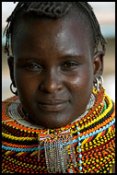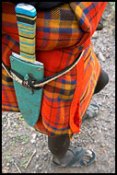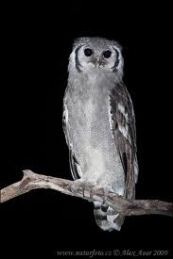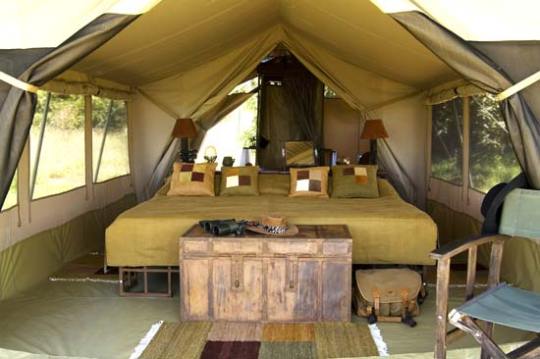Lamu Island
Normal
0
false
false
false
EN-US
X-NONE
X-NONE
/* Style Definitions */
table.MsoNormalTable
{mso-style-name:”Table Normal”;
mso-tstyle-rowband-size:0;
mso-tstyle-colband-size:0;
mso-style-noshow:yes;
mso-style-priority:99;
mso-style-qformat:yes;
mso-style-parent:””;
mso-padding-alt:0in 5.4pt 0in 5.4pt;
mso-para-margin-top:0in;
mso-para-margin-right:0in;
mso-para-margin-bottom:10.0pt;
mso-para-margin-left:0in;
line-height:115%;
mso-pagination:widow-orphan;
font-size:11.0pt;
font-family:”Calibri”,”sans-serif”;
mso-ascii-font-family:Calibri;
mso-ascii-theme-font:minor-latin;
mso-fareast-font-family:”Times New Roman”;
mso-fareast-theme-font:minor-fareast;
mso-hansi-font-family:Calibri;
mso-hansi-theme-font:minor-latin;}
The growth and decline of the seaports on the East African coast and interaction between the Bantu, Arabs, Persians, Indians and Europeans represent a significant cultural and economic phase in the history of the region, which finds its most outstanding expression in Lamu Old Town. The architecture and urban structure of Lamu graphically demonstrate the cultural influences that came together over several hundred years from Europe, Arabia and India, using traditional Swahili techniques to produce a distinct culture.
Lamu represents the Swahili culture, resulting from interaction between the Bantu, Arabs, Persians, Indians and Europeans. The origins of the town date back to the 12th century, but the site was probably inhabited earlier. The present town flourished in the early 13th century among the independent city states on the East African coast. In 1506 it was invaded by the Portuguese, who monopolized shipping and suppressed coastal trade, causing the once prosperous city state to lose its position and gradually decline.
Under Omani protection the coastal commerce slowly regained its momentum, leading to a further development of Lamu and the construction, by skilled craftsmen and slave labour, of town houses and mosques using coral stone and mangrove timber. In 1890 the entire coastal strip north of Zanzibar was assigned to the Imperial British East Africa Company. The East African Protectorate was established in 1895 and organized into provinces and districts under the new British administration in 1898. In 1963 Lamu became part of the independent state of Kenya.
Lamu is located on an island known by the same name on the east coast of Africa some 250 km north of Mombasa. The town is made up of two distinct sections, one built from stone and the other from mud brick. The old town centre consists of large houses of coral stone and mangrove timber. The relatively larger, surrounding area consists of mud, wattle and makuti houses. The whole built area covers about 37 ha, while the stone town is about 15.6 ha, articulated in three distinct areas. The oldest part of the town is in the north, the areas of Pangahari and Yumbe with the Council Chamber and the Friday Mosque, then expanding to the west and south in the 18th century (Mkomani area); the bazaar street runs north-south behind the seafront; the fort and the houses on the seafront were built in the 19th century. The approximately 400 houses of the Mkomani area date mainly from the 18th century, forming the largest and historically and architecturally the most interesting part of the old town. It is characterized by narrow streets and two- to three-storey buildings, mingled with small gardens.
The Swahili houses are marked with simplicity and uniformity in their exteriors, but they have elaborately carved wooden doors particularly characteristic to Lamu. The massive walls are covered with lime mortar. The houses have an entrance porch (daka) and an interior vestibule (tekani) with seats. Inside the house the spaces develop around small courtyards (kiwanda) and open galleries (misana); they are decorated with painted ceilings, large niches (madaka), small niches (zidaka) and Chinese porcelain.
The Lamu Fort was built between 1813 and 1821 in the southern corner of the old stone town, encouraging new development, particularly on the seafront. The fort is a massive multi-storey building with a central courtyard which has become an image of the Lamu community, being now used for weddings, meetings and theatre productions. The buildings on the seafront with their arcades and open verandahs provide a unified visual impression of the town when approaching it from the sea. One of the largest buildings on the seafront (dating from 1892) has been acquired as the Lamu Museum, exemplifying the finest characteristics of the verandah-style construction in the 19th century.
The section consisting of mud-brick buildings covers an area of some 21 ha and is spread between Langoni (the oldest part south of the fort), Tundami (north of the old town), and Gademi (the newest part, west of the old town). Having first developed spontaneously, many of the houses have been transformed into permanent buildings with concrete block walls and corrugated iron roofs. Such development has taken place particularly after fires in 1962 and 1981.
Amboseli – a land of giants

Amboseli is a land of giants. This is a place of wide dry plains, where the horizons stretch into the furthest distance and become one with the sky.
Amboseli is renowned for its elephant populations and large herds, including some impressively tusked bulls are drawn to a series of large, lush swamplands. But the most impressive giant of all is Mt Kilimanjaro.
Africa’s largest mountain lies just over the border in Tanzania, but the most impressive views of its snow-capped peak are to be found in Amboseli. The early light of dawn turns the mountain a dark hue of purple, and its snows into an ethereal pink.
The sight of Kilimanjaro high above herds of elephant crossing the plains of Amboseli is a timeless African image.
This area is home to many Maasai communities, centred around the Amboseli National Park. The park is 400 sq kms, with its southern boundary along the Tanzanian border.
The park is home to more than just Elephants, and herds of wildebeest, zebra and impala graze on the open plains.. There are areas of acacia forest that make for good birding, and are home to many small mammals. Cheetah are also often sighted here.
The park is centred around a large hill, with fantastic views of the surrounding plains, often crossed by whirlwinds that send winding columns of dust into the sky. This open country is good walking territory, and many camps and lodges organise game walks, or trips to spend time in local Maasai villages.
Karen Blixen Museum, Nairobi

For anyone with an interest in Karen Blixen’s book Out of Africa or the subsequent film, this museum is a must see. The author lived on a coffee estate in a house known as Bogani from 1914 until 1931. This area has now developed into the modern suburb of Karen on the outskirts of Nairobi. The house is now a National Museum, and is maintained for visitors in its original condition. Those who have read the book, or seen the film (which was filmed on location here) will recognize the house with its sprawling tropical garden and views of the nearby Ngong Hills. Efforts have been made to decorate all of the rooms of the house in their original style. The house itself is furnished with a mixture of original decor and props from the 1985 film production. The grounds contain displays of farming equipment from the plantation. The museum has excellent trained staff who are well versed in the history of the house and the life of Karen Blixen. They are available to answer queries and to give personally guided tours. The Museum is easily accessible from Nairobi, by taxi or bus. |
Camel Derby will take place from the 17th – 19th August 2012 at Yare Camel Camp in Maralal.
Kenya’s Camel Classic – Maralal Camel Derby The Annual Maralal Camel Derby takes place in the month of August in Maralal, a remote desert outpost in Samburu county.
The quiet town of Maralal, about 348 kms North of Nairobi, is considered the gateway to Kenya’s wild and arid North, and is a mecca for adventurers, nomads and camels.
Maralal Camel Derby will take place from the 17th – 19th August 2012 at Yare Camel Camp in Maralal.
This is real camel country, and the single humped dromedary camel is a vital part of life for many of Northern Kenya’s nomadic people.
Each year, the Camel Derby brings colour and action to the streets of Maralal as the finest Camels in the North gather for the big race.
While most of Kenya’s camel rearing communities do not ride them- using them as pack animals- they are excellent handlers and judges of an animals strength and potential for speed.
Winning the Derby is a great local honour, and each year the title is hotly contested. But this by no means a purely local event.
The Town is a popular stopover for travellers looking for adventure in Kenya’s Northern Frontier District – one of Africa’s last great unspoilt wilderness areas.
For anyone visiting the area around this time, attending the Derby is a must. The three day race event is a chance to experience culture, colour, action and adventure first hand.
This is not just a spectator sport – if you are going to attend the derby, why not saddle up and join in?
The derby this year will include: Camel ride competition for amateurs and experts as well, Tricamalon, 10km fun run, 5 km fun run for the physically challenged and bike races.
Verreaux’s Eagle-owl
Verreaux’s Eagle-owl -also known as the Milky Eagle Owl, Giant Eagle Owl- is a member of the family Strigidae and is the largest African owl. This owl is claimed to be the world’s third largest owl; after the Blakiston’s Fish Owl and Eurasian Eagle Owl.
Verreaux’s Eagle-owl ranges from 66–75 cm (26-30 in) in length. This species can attain a wingspan 2 m (6.5 ft) and weighs from 1600 to 3115 grams (equal to 3.5 to 7 pounds). In appearance, they are distinguished by a whitish oval disk face with a black border, pink eyelids, orange eyes and two feather tufts on their ears. Their feathers are dark brown on top and light grey below.
It is a nocturnal bird; it can be seen perching on exposed branches during the day. It often hunts in early evening and will wade into water to catch fish. Particularly partial to hedgehogs when nesting, it will take a wide variety of prey from moths to Great White Egrets, Grey Herons and apparently even Secretary Birds. At Lake Baringo Club the resident family has driven the White-faced Scops Owl from the grounds, having preyed on their chicks. They have also decimated the hotel’s domestic cat population, the remaining cats are very cautious. Above all Verreaux’s Eagle-Owls are opportunistic feeders which are quite happy scavenging for leftovers. You should watch out for them at lodges that engage in daily crocodile feeding.
Kilima Camp: one of the best safari holidays camp
Kilima Camp has a fantastic location overviewing the Masai Mara River and Plains. The intimate eco-lodge is an ideal base to enjoy the real African wildlife experience in comfort and style.
The camp has 12 Standard classic safari tents as well as 2 Deluxe tents which are ideal for honeymooners and families. The camp manager together with his highly professional team will give you an African experience to remember and can propose several bush activities to make your stay at Kilima Camp even more interesting, enjoyable and rewarding. Game viewing is superb all year and the camp is surrounded by wildlife. You will be sure to have memories for a lifetime during our safari game drives and we guarantee you to see amazing wildlife.
Kilima Camp is an intimate eco-lodge with 12 standard tents and 2 Deluxe Tents. Kilima Camp is a friendly safari holidays camp located in the Masai Mara (Maasai Mara) in Kenya. Kilima Camp is an ideal African safari camp and has a perfect location for those who wish to enjoy unforgettable safari holidays in Africa.
Kilima means “mountains or little hill” in Swahili. Kilima Camp is located in Kenya in the Maasai Mara (Maasai Mara) area at 1,800 metres above sea level.
The safari holidays camp is situated on the edge of the Siria escarpment, overlooking the Mara River (1,500 metres) with a phenomenal view, “the Gods’ window”. Hence Kilima Camp has a fantastic location in the Masai Mara (Maasai Mara), bordering the official perimeter of the game reserve.
Surrounded by an abundance of wildlife, Kilima Camp offers a true African adventure in style and comfort, it makes Kilima Camp a perfect safari holidays camp.
Game viewing in the Masai Mara (Maasai Mara), whether by car or on foot, around Kilima Camp is superb all year round. There is not doubt that your safari holidays will be wonderful and unforgettable.
From July to October, Kilima Camp is an ideal safari camp to witness the Great Migration where more than one million wildebeests and zebras cross the Mara River, an event which happens nowhere else in Africa but in the Masai Mara (Maasai Mara). This is a safari holiday of a lifetime!
At Kilima Camp, we do not only strive to offer our guests an unforgettable safari holiday in the African bush in one of the best wildlife areas in the world, but we also want to contribute to the conservation of the Masai Mara Ecosystem as well as to the well-being of the local Masai communities.(Maasai). We are proud to have been rewarded a bronze medal by Ecotourism Kenya.
Problems facing Masai Mara National reserve.
While the completion last year of the 87-kilometre Mai Mahiu- Narok road brought some relief, another 96 kilometres to the main gate is in a bad state. Tour drivers said they are forced to divert to people’s farms, a situation which they say have led to conflict between them and the local community.
It is a shame when tourists are blocked by weapon-wielding locals, who are rightfully protesting that tour vehicles are disturbing their livestock and trampling on their pasture,
Vice chairman of the National Tour Drivers and Guides Association Andrew Mungatana and the association’s chief executive Joseph Ole Parpai said the 40-kilometre section of the Narok-Sekenani stretch was almost unmotorable.
Narok and Trans Mara county councils get more than 80 per cent of their revenue from the wild life resort.
The local authorities gain from the reserve by charging gate entries, royalties in the lodges as well as balloon settings and airplane landings. Although Narok County Council announced it had switched to electronic ticketing in a bid to shore up its revenue and seal corruption loopholes.
Tour drivers are asking the government of Kenya to intervene and make sure the road is repaired.
Bird Migration
“The stork in the heavens knoweth her appointed time; and the turtledove, and the crane, and the swallow, observe the time of their coming.”- These are not just any words but are words written in the bible by Job about migration of birds.
In our backyards, most of us won’t see anything like the migrating Whooping Crane, but there’s a tiny possibility we might, in certain neighborhood wildlife refuges and parks. Sometimes a bird species that’s present in our neighborhood the whole year can also be migratory.
Birds do not migrate because they figure out that they need to. It’s been shown that, at least in some birds, changes in day length cause glands in the birds’ bodies to produce hormones that produce profound changes inside the birds, changes that prepare them for the flight south. In the fall, as days grow shorter, fat accumulates under the skin. This fat contains energy needed for those coming days when the birds will be spending more energy flying than they’ll be eating during their occasional rests. Weather changes sometimes trigger a migration’s start, but by then the birds are already prepared. The urge to migrate must be very powerful. Starlings caged as their migration time approaches become extremely fidgety and point their bodies in the direction they want to fly toward.
Watching bird migration take place is one of the most exciting and interesting things a birder can do, and it’s something you can see in your own backyard but it is wonderful if watched in the wild while on a safari. Especially in the spring when birds are in their bright courtship plumage and males are lustily singing, it’s a pure joy to walk around taking note of which species have arrived. In the fall, as Northern-Hemisphere migrants head back and they are much quieter and their plumage is more drab. They’re harder to identify, too. Nonetheless, their passage is still a majestic event to behold.
Birds fly at varying altitudes during migration. An expedition to Mt. Everest found skeletons of Pintail and Black-tailed Godwit at 5000 m (16,400 ft) on the Khumbu Glacier. Bar-headed Geese have been seen flying over the highest peaks of the Himalayas above 8000 m (29000 ft) even when low passes of 3000 m (10000 ft) were nearby. Seabirds fly low over water but gain altitude when crossing land, and the reverse pattern is seen in landbirds. However most bird migration is in the range of 150 m (500 ft) to 600 m (2000 ft). However birds too have their destinations and they just don’t go anywhere.
Turkana Tribe of Kenya
Turkana tribe is the second largest pastoral community in Kenya. This nomadic community moved to Kenya from Karamojong in eastern Uganda. The Turkana tribe occupies the semi Desert Turkana District in the Rift valley province of Kenya. Like the Maasai and tribes, Turkana people keep herds of cattle, goats and Camel. Livestock is a very important part of the Turkana people. Their animals are the main source of income and food. However, recurring drought in Turkana district adversely affect the nomadic livelihood.
Like the Maasai and Samburu, the Turkana people are very colorful. Turkana people adorn themselves with colorful necklace and bracelets. Their decorations are made of red, yellow and brown colored beads. Cattle’s rustling is common in Turkana district and round its border with Uganda, Sudan and Ethiopia. Tribes inhabiting this area are often involved in tribal fights for livestock and water. Cattle’s rustling has been a common phenomenon for many decades and appears to be a sort of cultural game for the nomadic communities living in parts of the Rift valley and its surroundings. With the proliferation of small arms, cattle’s rustling has become more dangerous and the Kenyan government has intervened in solving the problem.
With a population of about 250,000 people, the Nilotic language speaking Turkana people have successfully maintained their tradition compared to other tribes in Kenya. Turkana men cover their head with mud, which is then painted blue and decorated with ostrich and other feathers. The main garment for the Turkana people is a woolen blanket. The type of attire worn by a woman is determined by her marital status. Body tattooing was traditionally used to indicate achievement in the community. Men or warriors who killed enemies were tattooed to indicate what they have done for the community. Most of people in Turkana tribe adhere to traditional beliefs while 5 to 15% are Christians but very few are Muslims.



Tourism in Kenya
Most tourists come to Kenya for a close encounter with African wildlife- and you don’t get much closer than being kissed by a Giraffe. This is a common occurrence at the Giraffe Centre, a conservation and education centre located just outside Nairobi, where visitors learn about these gentle giants through intimate experience.
Founded in 1979, The African Fund for Endangered Wildlife Kenya was created in a bid to save the endangered Rothschild Giraffe. Kenya is home to 3 sub-species of giraffe, the common Maasai giraffe, the darker coated reticulated giraffe, endemic to Northern Kenya, and the Rothschild.
This most rare species was originally found in Western Kenya and by 1980 loss of habitat to agriculture had reduced their wild numbers to less than 140. AFEW raised funds to captive breed the animals at their centre in Langata (a short drive from central Nairobi). Eventually 4 herds were reared and released into suitable National parks and Reserves: Lake Nakuru National Park, Kenya, Mwea Game Reserve, Ruma National Park and Nasalot Game Reserve in Kenya.
Ongoing release programs have seen translocations to Soy Sambu Ranch near Lake Elementaita, Kigio Conservancy near Gilgil and Sergoit ranch in Eldoret. Today the wild Rothschild Giraffe population in Kenya is over 300.
Today the Giraffe centre remains a breeding centre and even more importantly, an education centre for the public. A well crafted information centre teaches visitors all they need to know about giraffes and their conservation, while a nature trail through the surrounding dry upland forest lets them explore typical giraffe habitat.
But the real attraction here are the giraffes themselves, and no visitor to the centre will come away without having gained a very personal experience of the world’s tallest animals.
Specially designed wooden platforms mean guests will find themselves eye to eye with members of the resident herds. On arrival, everyone is given a handful of special “giraffe treats’ which are very popular with the more sociable herd members.
Hand feeding a giraffe lets you discover the remarkably gentle nature of these huge creatures. Giraffes are herbivores who feed almost exclusively on leaves, which they pluck not with their teeth, but with a long, prehensile tongue.
The giraffes at the centre are so at ease with their human visitors that they will happily eat from your hand, or if you’d like, from between your lips with a soft lingering kiss.
Beneath the giraffes, family groups of warthog laze in the sun and take advantage of the occasional dropped treat.
This is most certainly not just a tourist attraction. The real aim of the centre is to sensitize Kenyans, especially the youth, to the importance of conserving nature and the environment.
Every day tourists visit the giraffe center and for many it is their first time to see a live giraffe- and any initial fears are quickly dispelled by helpful Kenyan guides, handfuls of treats, and the occasional kiss.
After this experience, the tourists attend lectures, take a guided walk in the forest, and become a part of the centre’s ongoing program to create ambassadors for conservation. In recent years, over 55,000 tourists have had this remarkable experience.
All over Kenya, Africa, human-wildlife conflict is creating a dividing line between people and wild animals- which are seen as threatening, dangerous and unnecessary.
The giraffe centre is helping to blur this divide; international visitors whose entry fees are supporting these programs mingle with gentle giraffes, and learn about their value to Kenya’s great natural heritage.
Every visitor to Nairobi, Kenya should take the time to visit the Giraffe centre, a great way to spend a morning or afternoon that supports an even greater cause.


